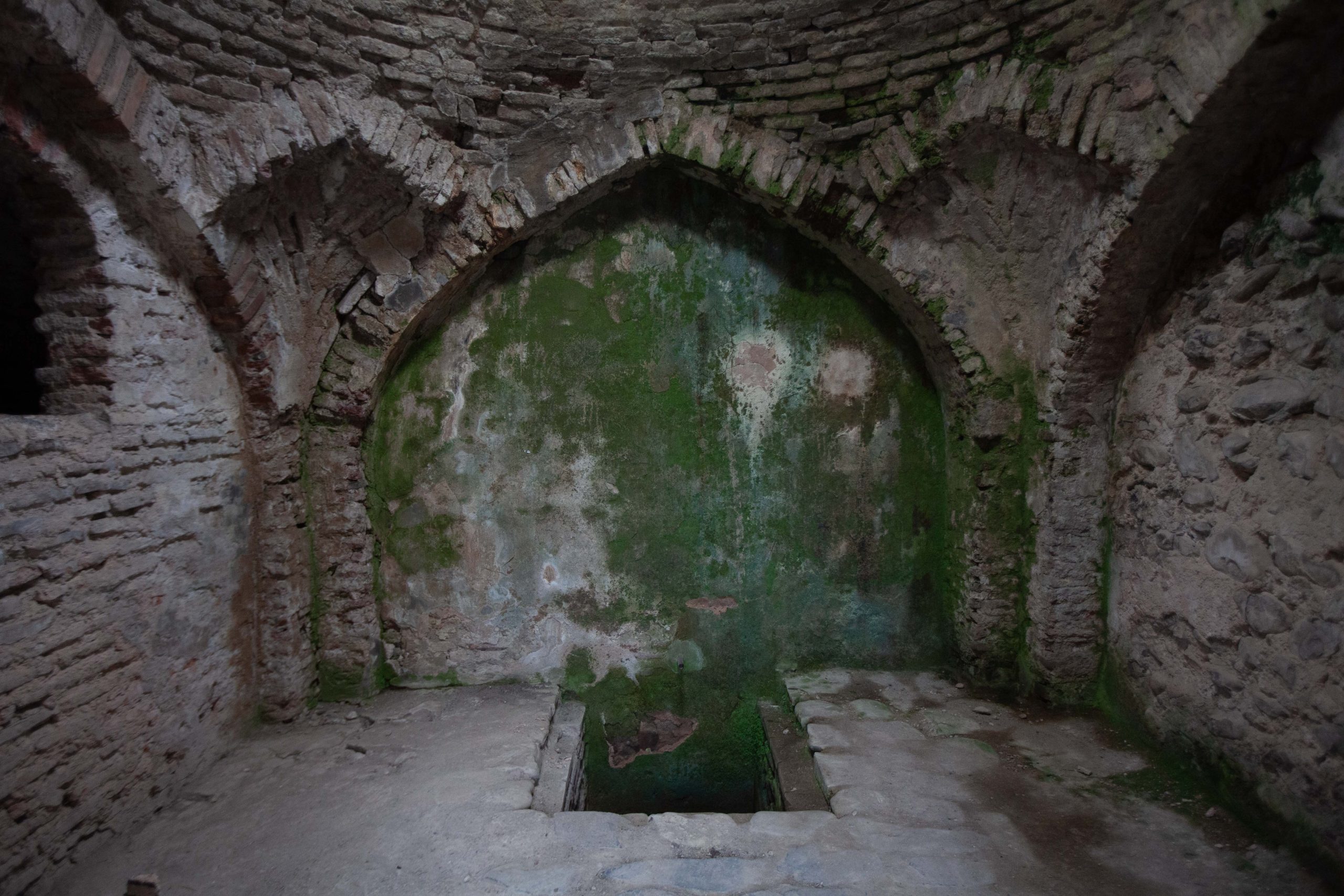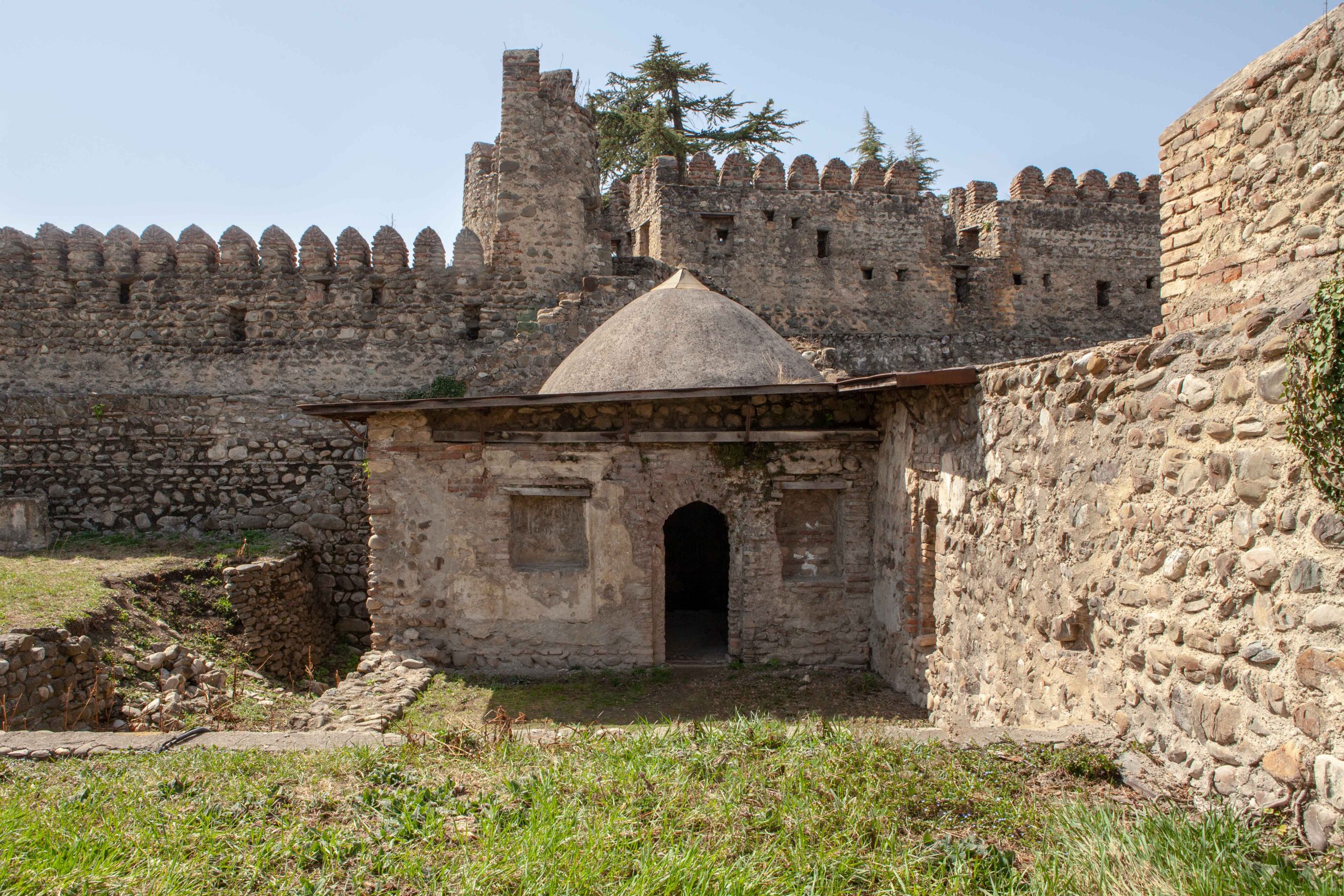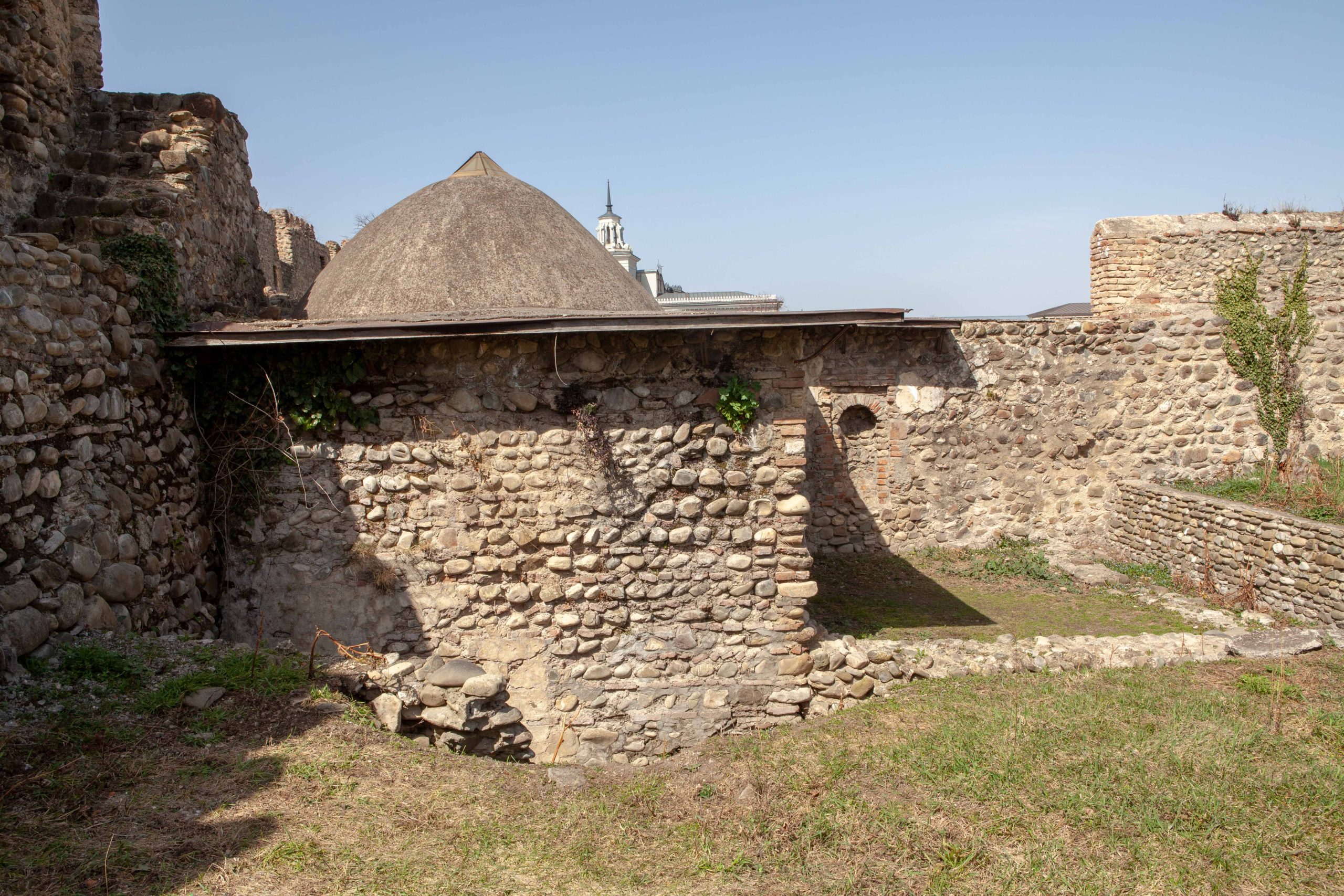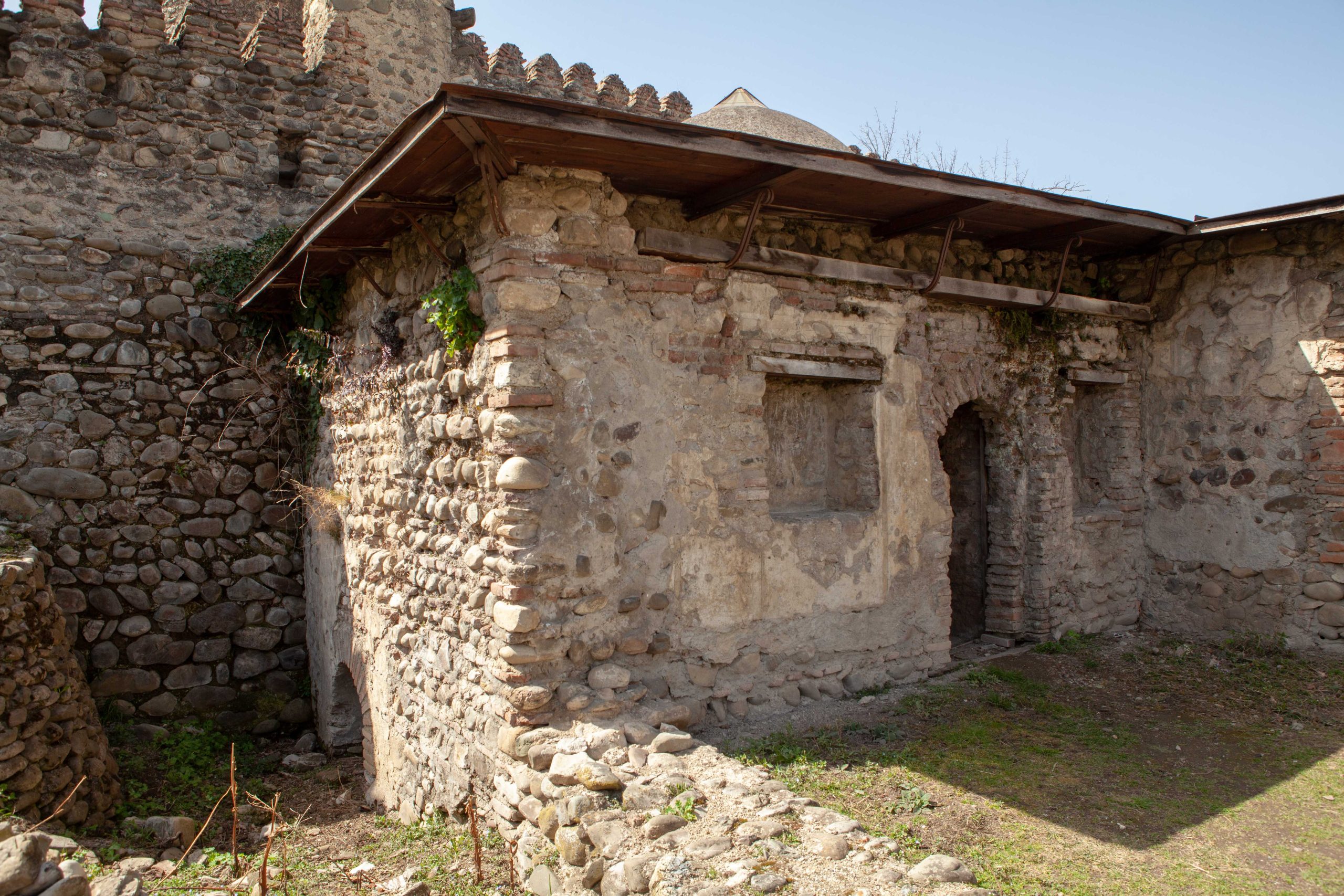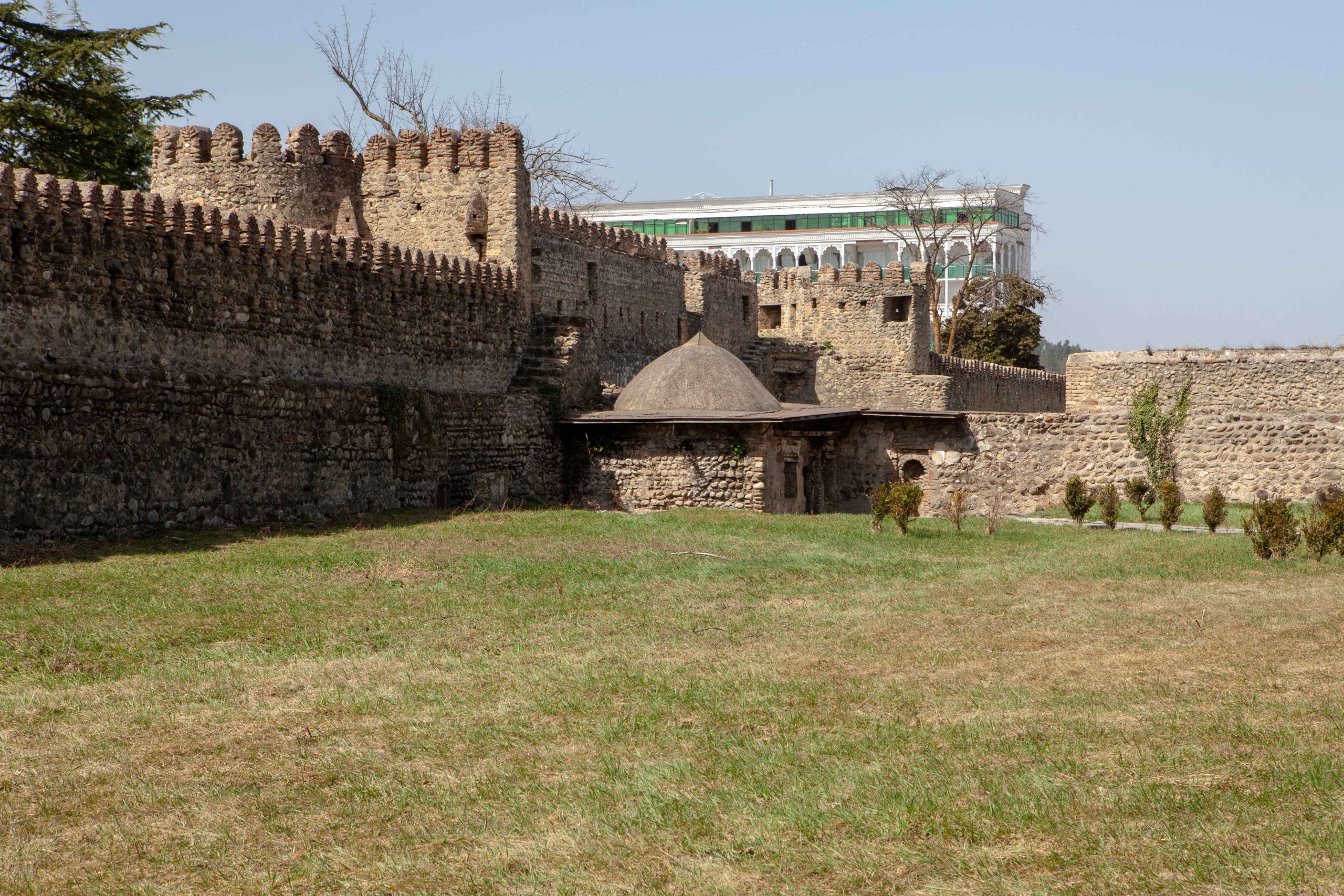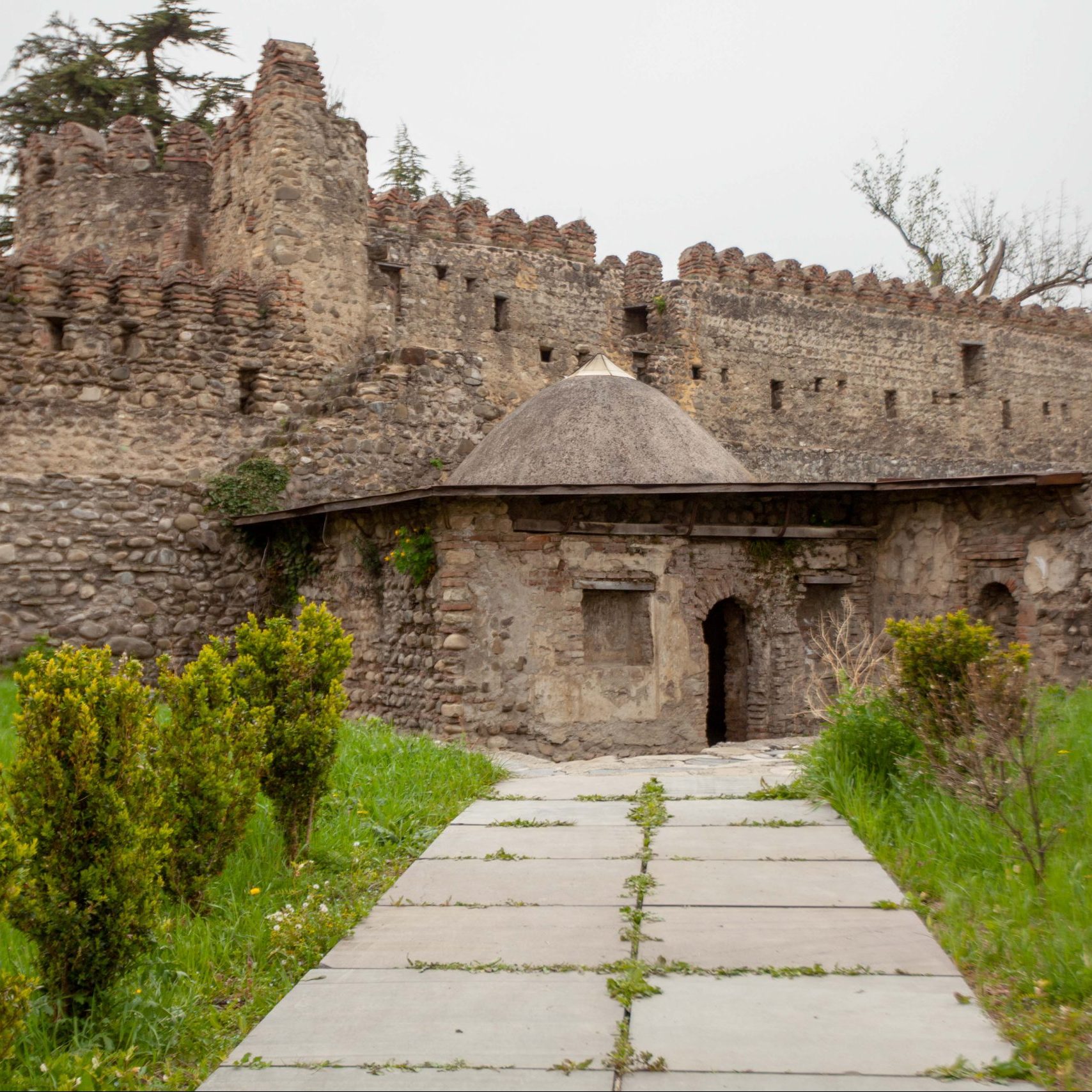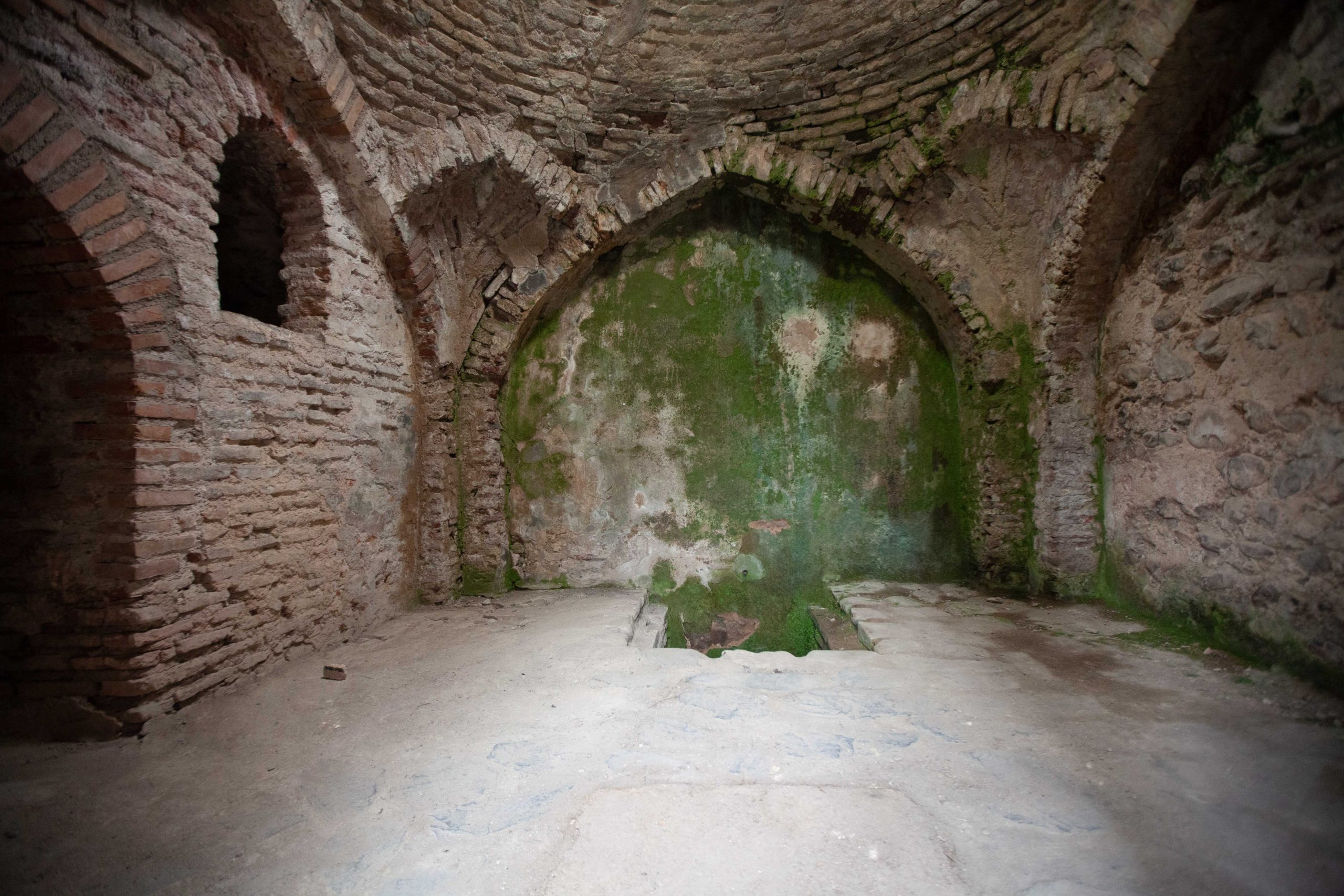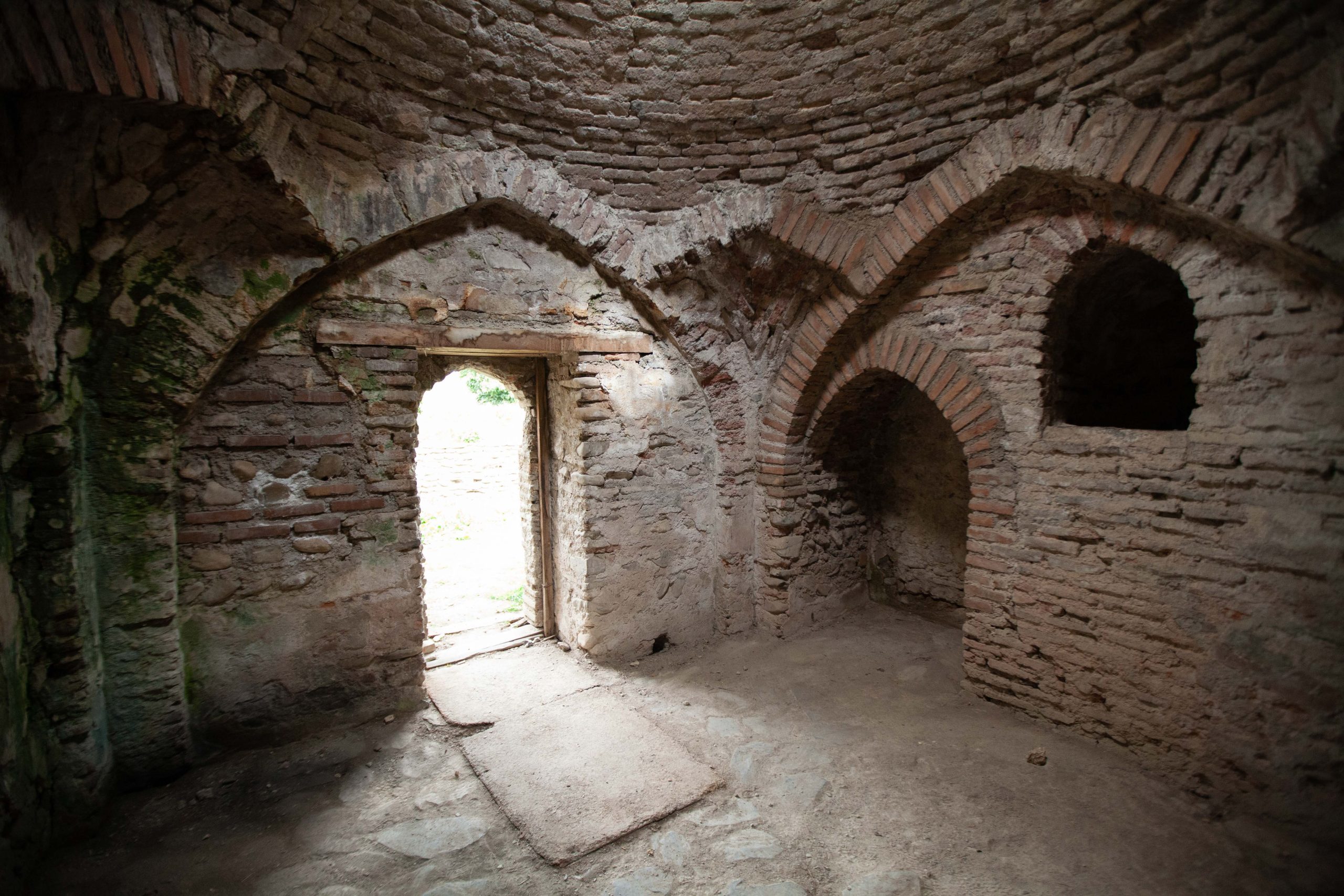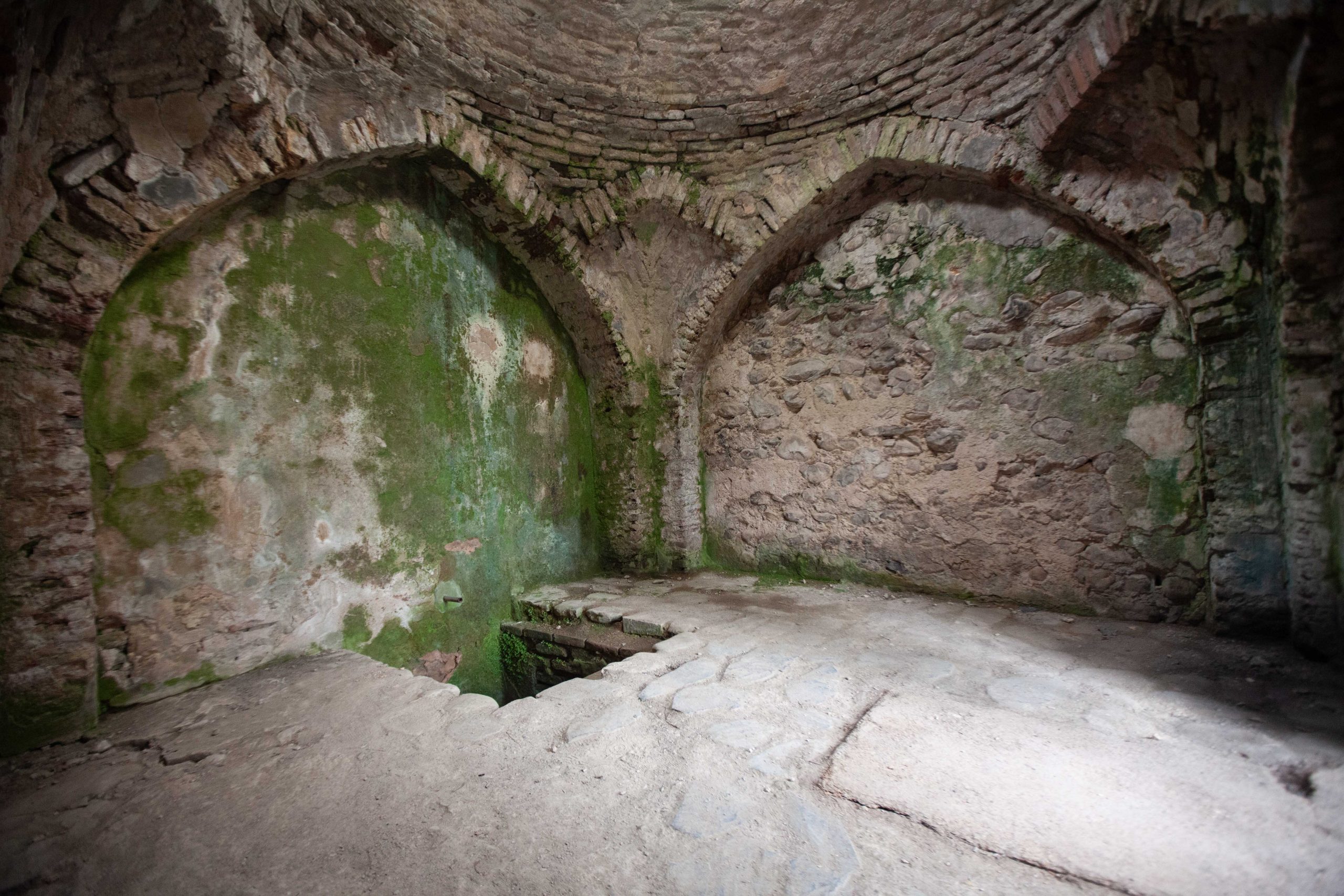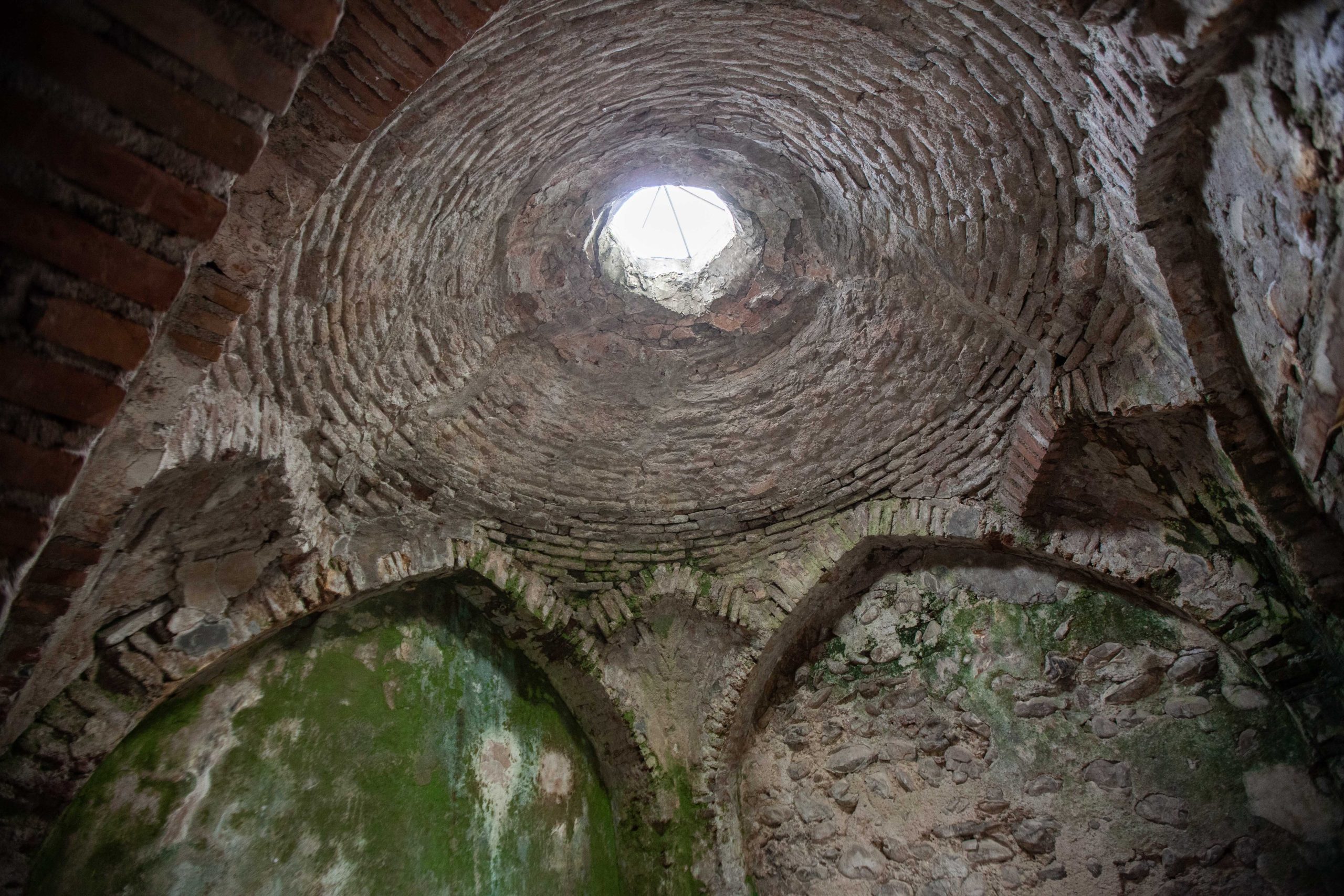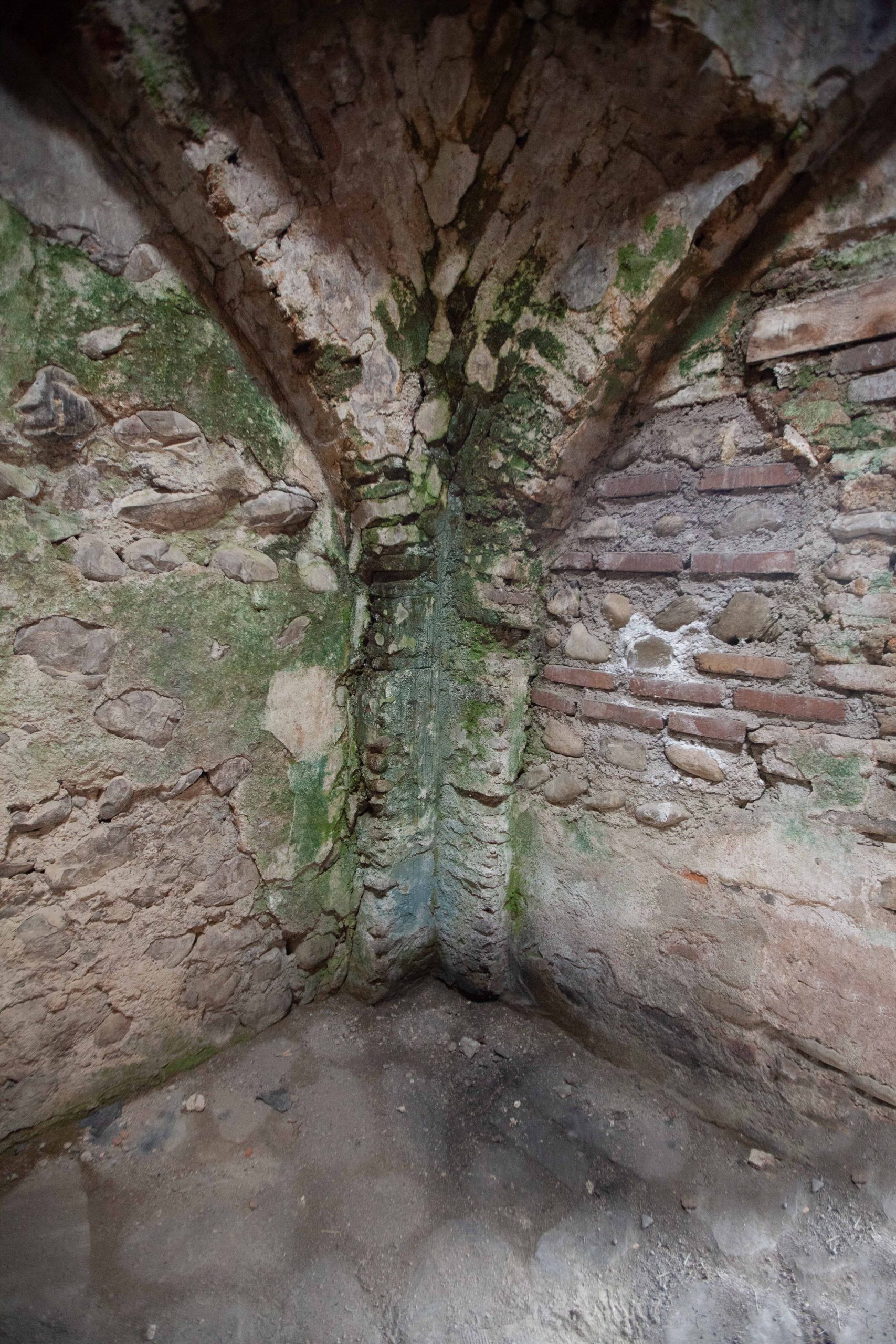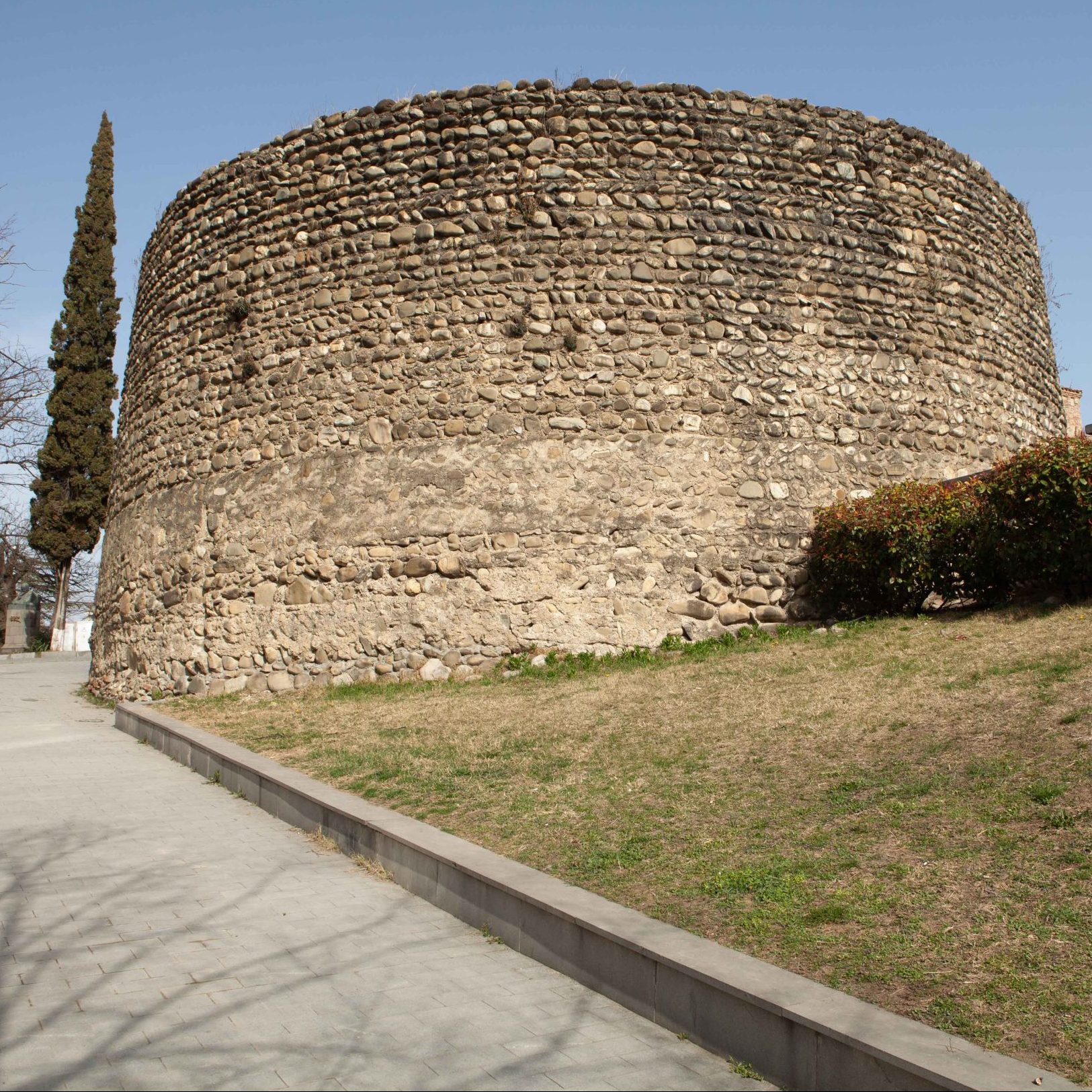აბანო „ბატონის ციხის“ ტერიტორიის ორად გამყოფ კედელზე, სამხრეთის გალავნის შეერთების კუთხეშია აშენებული. ერთსრთულიანი აბანო გვიანფეოდალური პერიოდის, ძველი ქართული სტილის აბანოების სისტემაზეა მოწყობილი, იმ განსხვავებით, რომ მისი კედლები მოხატული ყოფილა. რიყის ქვით ნაგები ერთსართულიანი მცირე ნაგებობა გადახურულია სფერული გუმბათით, სინათლის წყაროსთვის გუმბათის ცენტრში მრგვალი ღიობია დატოვებული. ინტერიერის კედლები შეისრულთაღიანი ნიშებითაა გაფორმებული. მაგრამ ნაგებობა ჩვენამდე სრულად არ არის მოღწეული – შემორჩენილია მხოლოდ საბანაო ოთახი აუზით და ცხელი წყლისათვის მოწყობილი წყლის ავზი, რომლის იატაკის ქვეშ მოწყობილი იყო ღუმელი და რამდენიმე სათავსო. აბანო რამდენიმე სადგომისაგან შედგებოდა. ერთ-ერთი ასეთი სადგომი უშუალოდ საბანაო ოთახთანაა დაკავშირებული. იგი საგანგებოდ ყოფილა გაფორმებული მოხატულობით. აბანო ბუხრით თბებოდა, რომელიც აბანოს ქვეშ, მიწის ზედაპირიდან ორი მეტრის სიღრმეზე აღმოჩნდა. მეცნიერების აზრით, აბანოს აშენების თარიღი არჩილ მეფის აღმშენებლობას, ანუ 1667-1675 წლებს განეკუთვნება.
მოცმული ნაგებობა მნიშვნელოვანია სიძველითა და ტიპოლოგიით, იგი თელავში შემორჩენილი საზოგადოებრივი დანიშნულების შენობის, კერძოდ, აბანოს ერთ-ერთი ადრული ნიმუშია.
The bath is built on the wall dividing the territory of “Batonis Tsikhe”, at the junction of the southern gate. The one-storey bathhouse is built according to the system of the old Georgian bathhouses of the late feudal period, except that its walls were painted. Built of cobblestone, the small one-storey building is covered with a spherical dome and a round opening is left in the center of the dome for a light source. The interior walls are decorated with pointed arch niches. However, the building is not fully preserved – there is only a bathing room with a pool and a hot water tank, under the floor of which there was a stove and several storerooms. The bath consisted of several cabins. One of these cabins is directly connected to the bathing room. It was specially decorated with paintings. The bath was heated by a fireplace, which turned out to be under the bath, at a depth of two meters from the ground. According to science, the date of construction of the bathhouse refers to the period of King Archil, i.e. 1667-1675.
This building is important in terms of antiquity and typology. It is one of the earliest examples of a public building remained in Telavi, namely the bathhouse (Abano).
